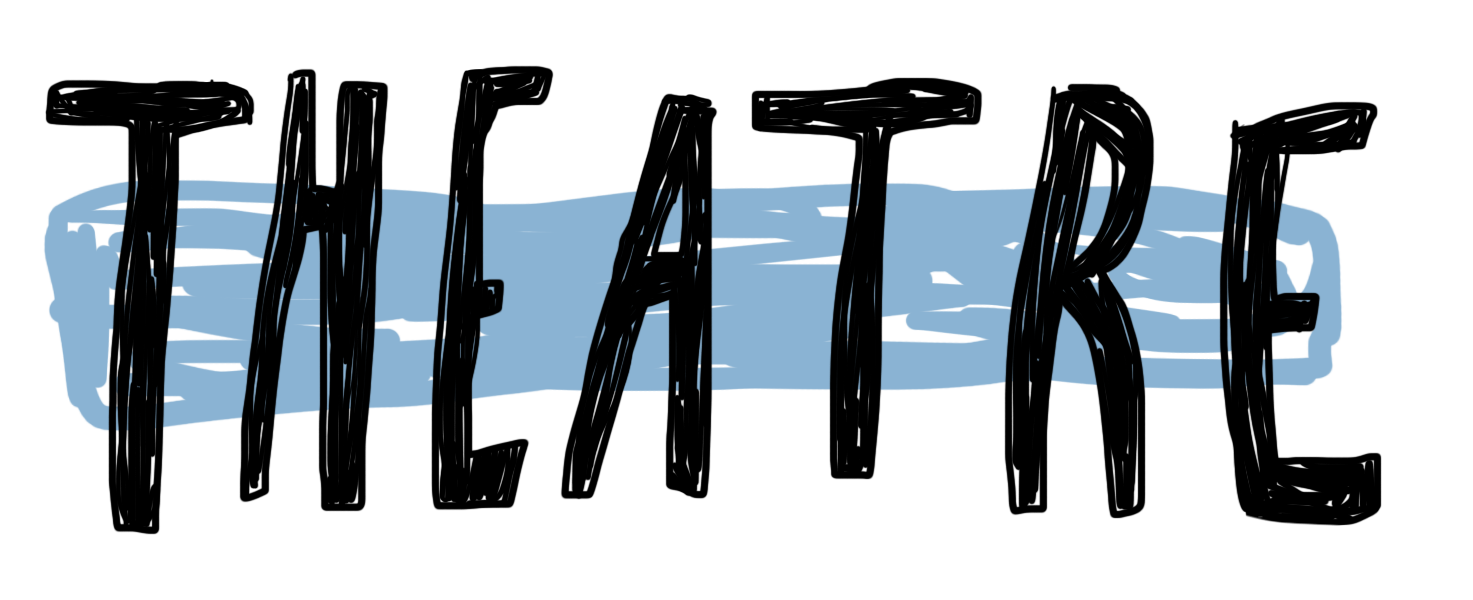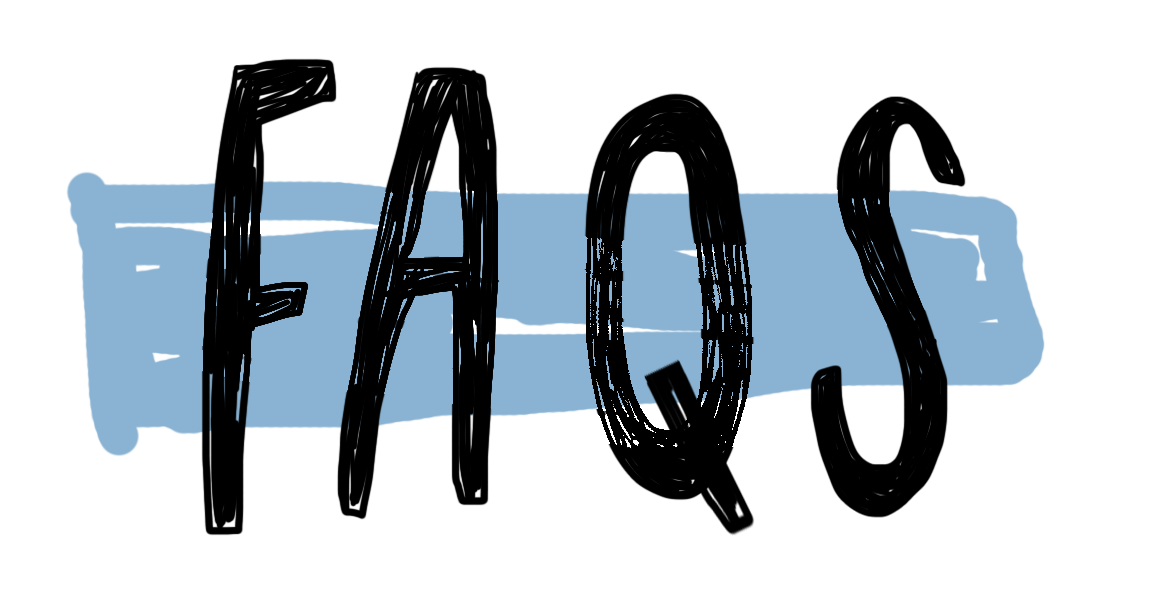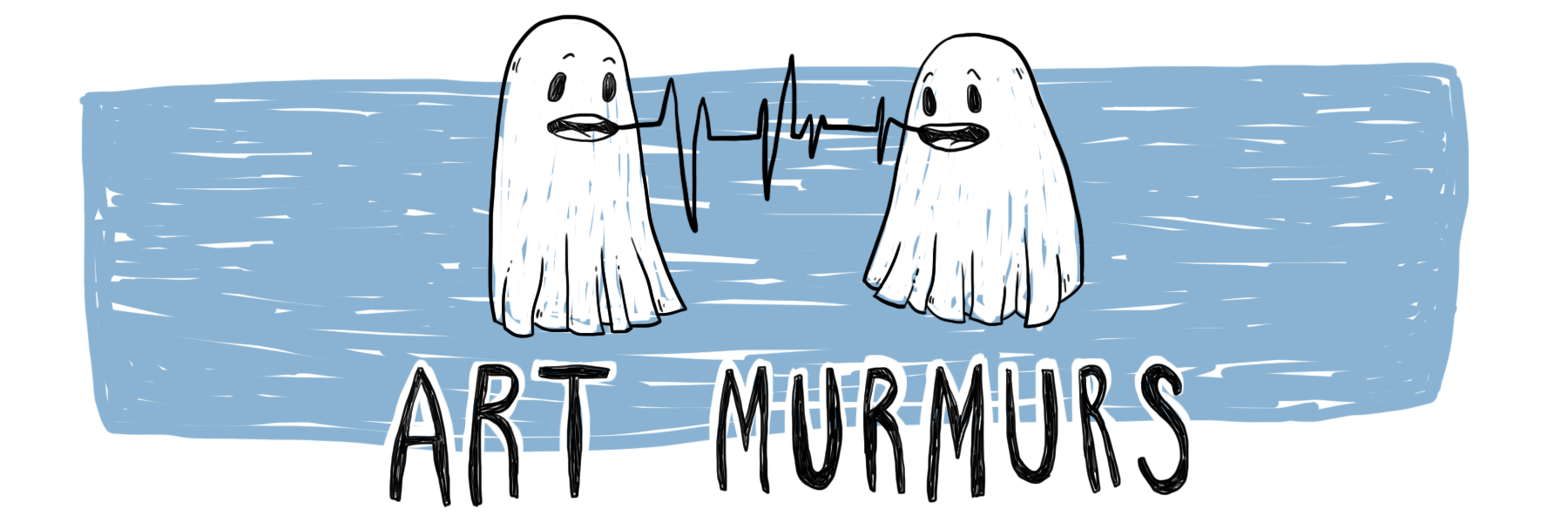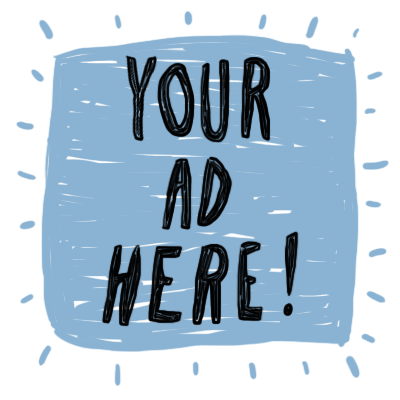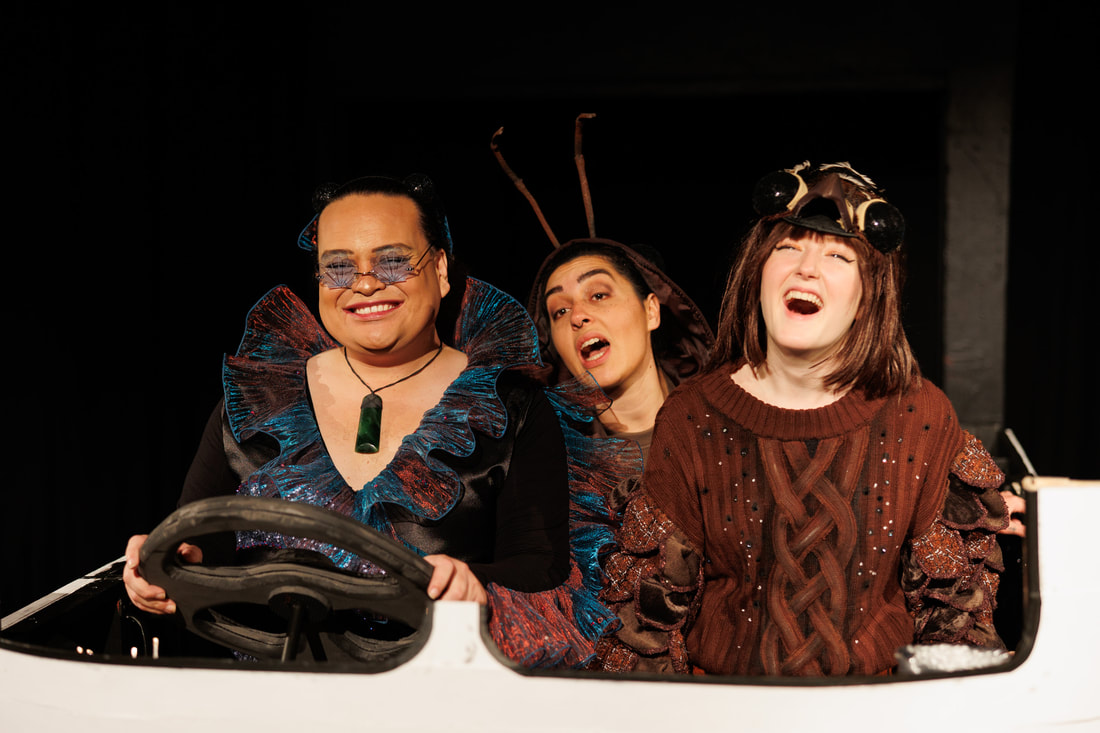Emilie Hope
The costumes in this show are, of course, amazing. Designed by the wonderful Victoria Gridley, and constructed by herself, costume technician Jay Otto, and costume interns Sally Hughes, Kailtyn Jacobs, Sabrina Shaw, Lillian Denness, Maxence Benoist, and Dottie Olsen. They either evoke the essence of the character such as the black mermaid-esque dress for Tuna or have creative recognizable elements of a particular creature such as Wētā’s legs. It’s clear a lot of thought and work went into each of these costumes, which are extremely effective and aid to the life of the show.
Set design by Anderson and painting by Anderson and Katene is minimal yet effective. There are three panels of an Aotearoa New Zealand landscape with a road travelling through, some smaller panels of tufts of grass, and a log. It places us in the broad and colourful landscape of this gorgeous country without being too specific. And yes, there is a van in the show. I know! It comes out, moves around, has a steering wheel and everything! Very cool indeed. The audience even go “oooh” when they see it taken for a spin for the first time. The lighting design by Wren Glover is good but I am surprised there aren’t more colour states. I also find the levels of the sound to be slightly too loud – I either can’t hear the singers or not well enough to catch any of the lyrics. This can easily be adjusted live at each performance by the operators (Ben Kelly and Wren Glover). Which is a shame because there are some real musical talents behind the music including Benjamin Tipene Rann and Eddie Kerr, not to mention Katene, Morgan, and Grace’s voices. I’m sure this will be adjusted in the coming performances.
In terms of narrative, the team do a good job of giving facts without it hitting too hard on the education side (did you know wētā have ears on their knees?), and therefore the show is less in the vein of edutainment about the various and unique native creatures and more about the characters and their relationships. What are the conflicts for the three friends and how could these be brought more to the forefront? Tuna and Wētā butt heads a lot but there’s not really any resolution there – they both become steadily more kind to one another. Which is a good message, but it doesn't necessarily solve the conflict. The most emotionally distinctive moment of the show is when Kārearea takes a moment alone after realising a friend no longer lives where they thought they did due to humans encroaching on native habitats. And yet I do not connect to this moment. If anything, I have a stronger emotional connection with Kārearea and their pet rock which helps them sleep at night. How can this moment be stronger? Should Kārearea talk more about this friend so we see how much they mean to them before the realisation of them no longer being there? If this is meant to be a realisation that the friend is dead, how could this be clearer?
In terms of the relationship to the audience, ask the Horse With No Name team to think about how to interact with the children. There are some lovely moments towards the end of the show where Gary the Glowworm is showing off some dance moves. After incorrectly doing the floss, a child in my row got up and did it correctly. How could there be more of this?
Land of the Long Long Drive is a beautiful and entertaining show for all ages. It has an incredibly talented cast, most of whom are wearing multiple hats, and crew, and I am humbled to see such a well-crafted show with so many people involved. The show is on until the 22nd of April at Circa Theatre.
